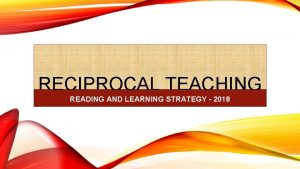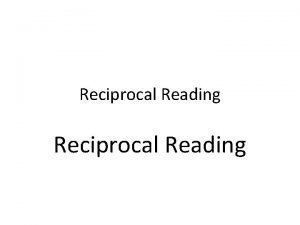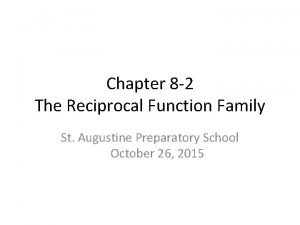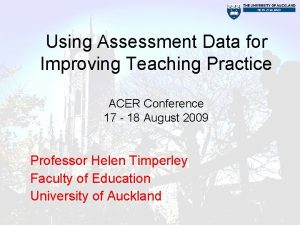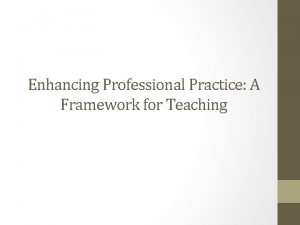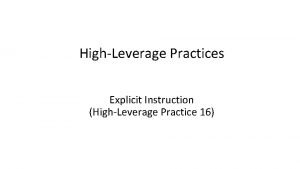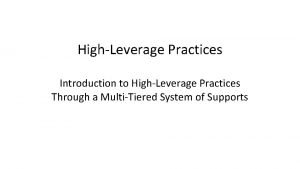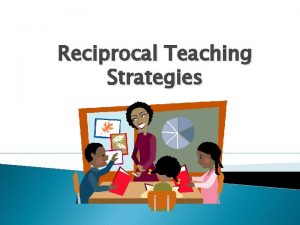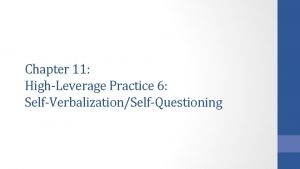Chapter 8 HighLeverage Practice 3 Reciprocal Teaching Reciprocal








- Slides: 8

Chapter 8: High-Leverage Practice 3: Reciprocal Teaching

Reciprocal Teaching • Instructional activity in which students perform as teachers, usually in reading • Teachers model, then help students learn to guide group discussions using four strategies: • Summarizing • Question generating • Clarifying • Predicting

Reciprocal Teaching • Encourages students to think about their own thought process during reading • Helps students learn to be actively involved and monitor their comprehension as they read • Teaches students to ask questions during reading and helps make the text more comprehensible

Reciprocal Teaching • How to use it • Groups of four • Distribute one note card to each member of the group identifying each person’s role with respect to the four strategies • Students read a few paragraphs of the assigned text selection • Encourage note-taking strategies • At given stopping point, summarizer will highlight the key ideas

Reciprocal Teaching • How to use it (Cont’d): • Questioner poses questions about the selection: • Unclear parts • Puzzling information • Connections to other concepts already learned • Clarifier addresses confusing parts and attempts to answer questions posed • Predictor offers predictions about subsequent events in the story • Roles switch one person to the right, and the next selection is read • Teacher’s role is to facilitate the students’ abilities to use strategies successfully

Peer Assisted Learning Strategies (PALS) • 25 -to 35 -minute activity • implemented by teachers two to four times a week • designed to complement, not replace, existing reading and/or math curriculum

Peer Assisted Learning Strategies (PALS) • Reading • Students divided into pairs • Each member takes turns being coach and reader • Coach listens and provides feedback • Math • Coaching and practice • Students work on a sheet of problems in a skill area • Coach uses a sheet that contains questions, designed to guide the player • 15 -20 minutes

Text Comprehension • Reciprocal teaching used in small groups to improve comprehension • Teachers show students how to guide a conversation about a book • Asks a question about the main idea • Step 1: ask question • Step 2: clarifying any unfamiliar words • Step 3: summarizing • Step 4: predicting
 Teaching practice chapter 1
Teaching practice chapter 1 Reciprocal teaching lesson plan
Reciprocal teaching lesson plan Reciprocal teaching role cards
Reciprocal teaching role cards Reciprocal reading cards
Reciprocal reading cards Lesson 2 the reciprocal function family
Lesson 2 the reciprocal function family Scale down teaching
Scale down teaching Using assessment data for improving teaching practice
Using assessment data for improving teaching practice Enhancing professional practice a framework for teaching
Enhancing professional practice a framework for teaching Singapore teaching practice
Singapore teaching practice


